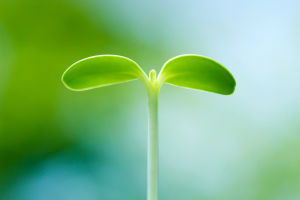The Autumn Crocus, also known as Colchicum, is a stunning late-season bloomer that brightens up gardens with its delicate, goblet-shaped flowers.
Unlike spring crocuses, these beauties grace the garden just as the weather starts to cool, adding a vibrant splash of purple, pink, and white to the fading fall landscape.
What Makes Autumn Crocus Special?
Autumn Crocus is unique because, despite its name, it isn’t technically a crocus. It belongs to the Colchicaceae family, and its flowering pattern is the opposite of most plants — the leaves emerge in spring, but the flowers don’t appear until autumn. The bloom's timing offers a charming surprise just when many other plants are starting to wind down for the year.
How To Plant Autumn Crocus In Your Garden
Video By Horticulture Magazine
How to Grow Autumn Crocus
Planting Time:
The bulbs (technically called corms) are best planted in late summer. They require very little maintenance and will reward you with blossoms as the days grow shorter.
Soil & Sun:
Autumn Crocus thrives in well-drained soil and prefers sunny spots, though they can tolerate partial shade. They’re great for planting in borders, rock gardens, or even naturalized areas under trees.
Watering:
Since these plants flower in autumn, they don’t require much watering during their growing season. Ensure the soil is moderately moist but never soggy.
Care Tips for a Flourishing Display
Leave the Leaves Alone: The foliage of Autumn Crocus appears in the spring and should be left intact. The leaves gather energy for the plant’s next bloom cycle, so allow them to die back naturally.
Fertilizing: There’s generally no need to fertilize these plants, but if your soil is poor, a light application of balanced fertilizer in spring will support healthy growth.
Dividing Corms: Over time, Autumn Crocus corms will multiply. Every few years, dig up and divide the clumps to prevent overcrowding and to spread the beauty to new parts of the garden.
Autumn Crocus Varieties
Colchicum Autumnale
This is the most common variety, showcasing delicate, pale purple or pink flowers. It's often referred to as the “meadow saffron,” though it should not be confused with the saffron crocus, which is entirely different.
Colchicum Speciosum
Known for its larger flowers and more vibrant shades of pink, this variety stands out in the autumn garden, sometimes blooming in late September or early October.
Waterlily Colchicum
This variety boasts double flowers that resemble water lilies, adding an exotic touch to your garden. Its large blossoms and unique shape make it a real show-stopper.
Are Autumn Crocuses Toxic?
One important thing to note is that all parts of the Autumn Crocus plant are toxic if ingested. It contains colchicine, which can be harmful to both humans and pets. Be mindful when planting these beauties in gardens that children or animals frequent, and always wash your hands after handling the bulbs.
So Lykkers! The Autumn Crocus offers a fantastic way to add color and elegance to your fall garden. Low-maintenance and long-lasting, these delicate blooms are a perfect addition for gardeners looking to extend the flowering season well into autumn. Just be sure to plant them in the right spot and enjoy their vibrant presence as the days grow shorter and cooler!


